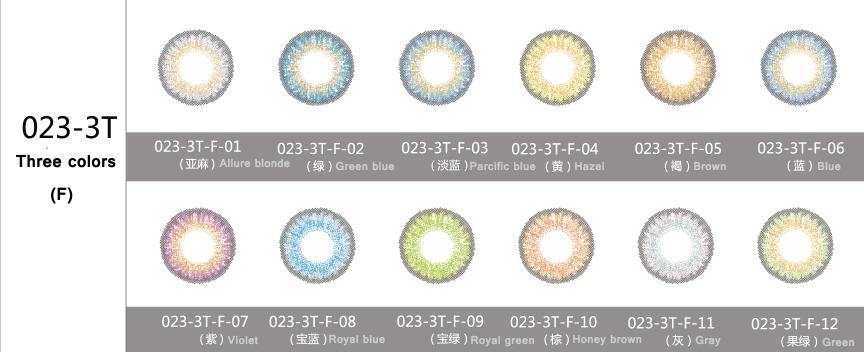
How should beginners choose contact lenses?Daily, Monthly, or Annual?
So simple, the wearing cycle of contact lenses is divided into traditional type (traditional), frequent replacement type (frequent replacement) and disposable type (disposable).
For the public understanding, traditional type corresponds to: annual, half-yearly, frequent replacement type corresponds to: monthly, biweekly throwaway: before daily throws, many people classify monthly and biweekly throws as throwaways, and this classification is not scientific , the correct division method should be in accordance with the above classification.
In short, if you can buy a disposable type, you can buy a disposable type. If you can’t buy a disposable type, you can buy bi-weekly or monthly. Unless you have to buy semi-annual and annual, such as special prescriptions, special customized lenses (special beauty films), otherwise Don't buy traditional products.

PMMA - contact lens lenses from a long time ago are popular all over the world because of their easy manufacture, durability, and good optical performance with variable parameters, but their shortcomings are also very prominent, poor oxygen permeability, which directly leads to corneal hypoxia, including the current RGP. On this basis, it is developed by adding various breathable materials.
HEMA-the material developed in the 1950s is characterized by softness and good comfort. It can be said that most soft hydrogel lenses will use HEMA, the most basic water-absorbing monomer, and then add other monomers to achieve Increase product hardness, improve wettability, settling resistance and increase or decrease moisture content. Different manufacturers will use contact lens materials composed of different polymers, monomers, and polymers, and then name them different materials, and then different manufacturers and materials will have different product names, such as Both Weikang and Bausch & Lomb used polymacon, and Bausch & Lomb called Qinglang (half a year) air thin for half a year, Weikang called Shuiying, X-blue, etc. But the problem with HEMA is that all oxygen permeability depends on water. The more water, the more oxygen permeable The higher it is, the easier it is to dry the eyes and the more precipitation, the less water and the poorer oxygen permeability. It is really difficult to deal with. Then there is the current mainstream silicon hydrogel (silicone), which is the material with the highest oxygen permeability at present, and it also represents The highest production process for soft lenses is currently being done by several major manufacturers. Due to the particularity of materials and the safety of wearing lenses, only daily, bi-weekly and monthly disposables are produced.



The annual throw is indeed high in hardness, but it has many disadvantages. Although the positioning is long-term, it will not take long to lead to lens contamination due to various precipitations. Once it causes harm to the eyes, there will be no regrets~ Therefore, we It is not simply looking at the lens material, the lens technology determines the quality of the lens, but considers this issue from the comprehensive health of the eye. Therefore, daily disposables, whether it is hydrogel or silicone hydrogel, are good for daily disposables~!
Thanks for reading
Sophie Yang
004@mikeeyewear.com